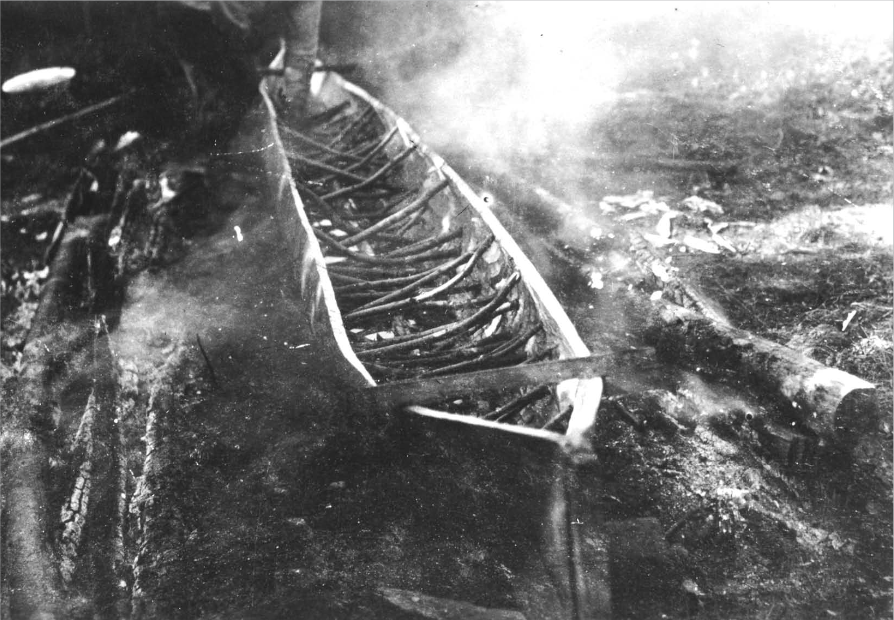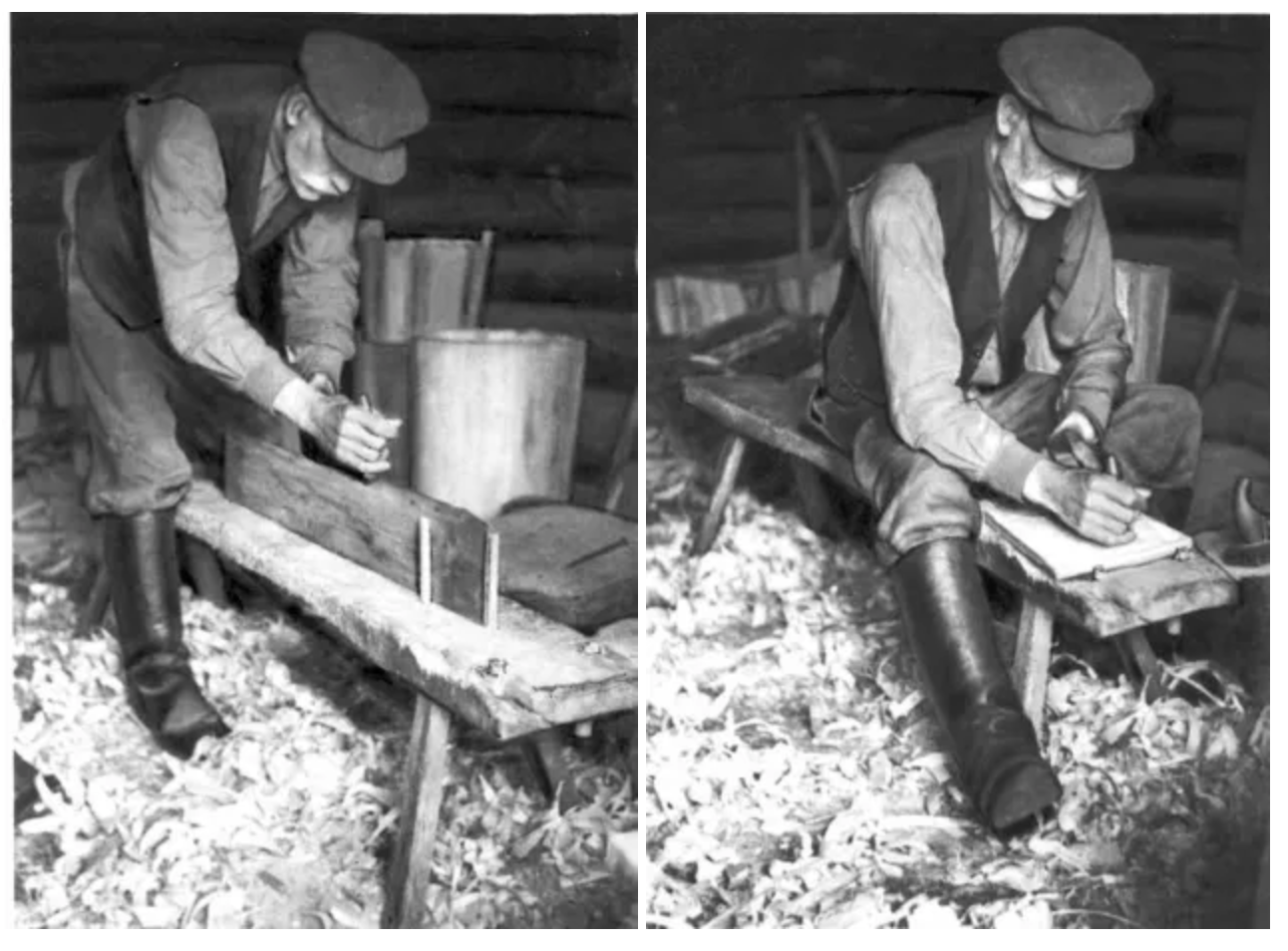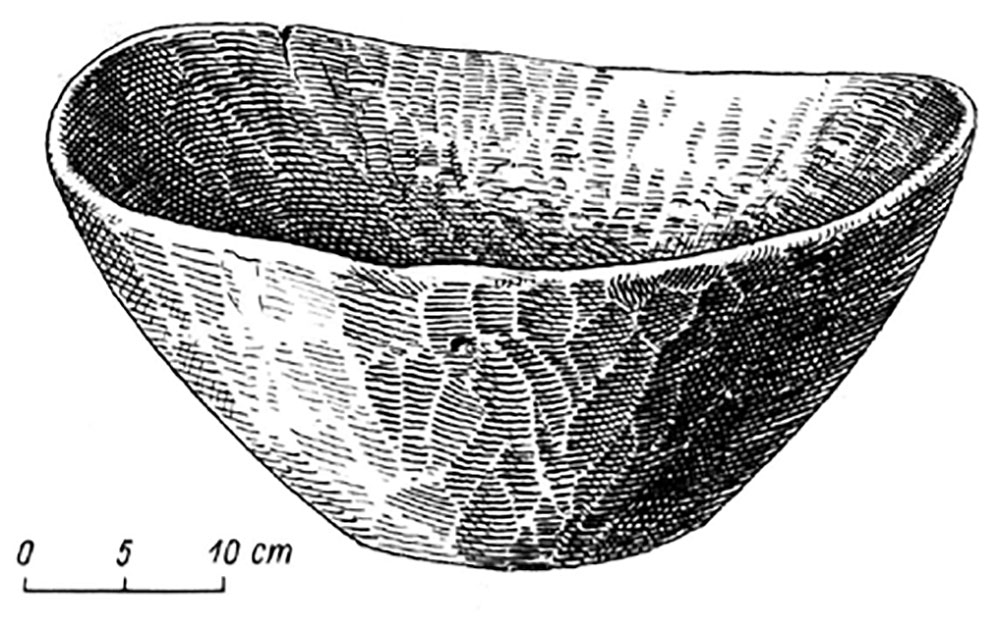
The following is excerpted from “Woodworking in Estonia.” The author, Ants Viires, devoted his life to recording the hand-tool folkways of his country without a shred of romanticism. Viires combined personal interviews and direct observation of work habits with archaeological evidence and a thorough scouring of the literature in his country and surrounding nations.
If all this sounds like a dry treatise, it’s not. “Woodworking in Estonia” is an important piece of evidence in understanding how our ancestors worked wood and understood it more intimately than we do. Viires records in great detail everything from the superstitions surrounding the harvesting of wood (should you whistle in the forest?) to detailed descriptions of how the Estonians dried the wood, bent it, steamed it and even buried it in horse dung to shape it for their needs.
Viires covers, in detail, the hand tools used by the Estonian, including many that will be unfamiliar to moderns (a beehive turner?). He then discusses all the different products Estonians made for their own use and for sale in the markets, including bent-wood boxes, chairs, chests, tables, sleds, carriages, spinning wheels, spoons, tobacco pipes, bowls and beer tankards.
Of older products of woodwork, the coffin and chest merit special mention, since already in feudal times a variety of methods were being employed for joining their sides, legs and the lid.
Priidu Anise (b. 1854) from Kaarma makes the following interesting comments concerning coffin and chest production.27
“They were always made of spruce or pine, which was soft and smooth. Chests were made to order by the village carpenter from wood supplied by the customer. The boards were also provided by the peasant placing the order.
“There were some people who made the complete chest at home. But clothes chests were a carpenter’s job; it always had to be more accomplished and so it was. I used to charge a basket of rye for making a grain chest; for a clothes chest – one and a half baskets of rye. The wood was provided by the customer…. The trunk of the pine was split in two, and if it was a thick one, the halves were split in two again. Of these you could get two wide boards and two narrow ones, for lids…. Such boards were put on the block and the edges cut clean, first one then the other.…”
The split boards were left to dry for a couple of years, first on the bathhouse and, just before use, in a room near smoke. This kept them from warping. The dried boards were taken to the carpenter “who went over them with a plane.” If the boards were wide, two were enough for the side, or base, of the chest. “I planed the sides of the boards until they were even, knocked in the tenons, and joined them together. Once the sides and the bottom were thus assembled, I marked the legs and cut the grooves and the holes for them.” (In cutting the groove “the work was done with the gimlet, and a chisel was used for cleaning up.”)28
“Now I put the whole thing together, first the ends, then the base and the front and back.“ Then came the making of the joints, which had to be strong enough to hold up the chest.
“The joining proceeded thus: The board which went through the leg was cut into and a wedge made of spruce was driven in…. This was an old method. In my time they began to put in tenons and join it that way.29 A hole was cut across the tenon with a fine gimlet, and the joint was sealed with a peg made of oak.” (“The bottom of the chest was placed so that the board on the side was ridged, or grooved, and thus it was joined (see Fig. 221). In larger chests an additional cross-piece was inserted, which went through to both side boards. If large tenons – 4″ (10 cm) in size – were used, it was not necessary to apply a cross-piece.”
To secure the top “the two rear legs were made higher, and cut so that the top would be forced onto them. Here also, oak pins were used…. Oak pins were strong and kept the top in position. Two more pins about 2″ (5 cm) in size were placed, and then the top rested firmly.”

The last stage was the smoothing and cutting away of all protruding ends. “All were cut away, from the top and the legs, with a sharp knife and a small plane where necessary.”
Altogether the work was completed with a minimum of tools, available in every peasant household: “An axe, knife, chisel, gimlet and an occasional plane… the edges were cleaned with a draw knife.” For making clothes chests a curved chisel was needed, and a special plane for the mouldings. The moulding planes in Kaarma came into use in 1870.
“It was first seen in the tool shop of the estate carpenter.” But it must be assumed that carpenters used such planes already in the early part of the 19th century, or even previously, for chest making; the museums abound in exhibits with moulding on sides and legs, obviously made by moulding planes.

ERM 4933.
The above methods of chest making must be considered general for the whole of Estonia, since the same features are found in all chests in the country, beginning with the oldest known one (1724) as may by be seen clearly in Fig. 221.
Chests with pillars in the four corners were common in Mediterranean countries in ancient times, from where they made their way through the Balkans and Central Europe, reaching as far as Scandinavia in the north. In the northern countries chests of the model described above appeared already in the 12th century.30 In Sweden, farmers made their own grain and flour chests until modern times.31
In the Baltic countries pillared chests are not commonplace. Apart from Estonia they were known to some extent among the Votyaks, as in Livonia and northern Latvia (Vidzeme).32 In other parts of Latvia, as well as in Lithuania and Belarus, the board chest with a lid that could be locked was popular until well into the 19th century. Specially decorated chests were used for clothes.33 Only in Pskov, where there was a strong element of Baltic nationals, was a variety of chests to be found, including the Estonian type. It is not unlikely that the chests reached Pskov parallel with their development in Estonia in the 19th century. In other parts of Russia chests of a different structure (“sunduk”) dating to the 17th century were used.34

The term for the pillar-cornered chest is closely linked in all Baltic-Finnish languages (Estonian – “kirst;” Finnish, Votyak – “kirstu;” Karelian – “kirsto;” Izhorian – “kirštu;” Livonian – “kiršt”), and was carried over into Old Russian – “kersta;” Latvian – “šķirsts”).35
On the basis of the ancient terms and in the light of archaeological discoveries in Scandinavia, it may be assumed that the type of chest as described above was known in Estonia before the 13th century.
Our impression of the Estonian chest so far is somewhat incomplete. We have admittedly noted that the basic structure of chests in Estonia was fairly uniform throughout the country; however, certain distinctions in detail and outward appearance exist between various districts. The most significant differences concern the lid. In the 19th century the gable-type lid was most in use in southeastern Estonia (Fig. 222). This type was produced by the Haanja home industry until the trunk and commode made their appearance in the 1880s. This was also the case further south, in Vidzeme.36 Similarly, in Pskov and other Peipus areas, as well as further north among the Votyaks, it was equally popular. The origin of the kind of lid can be traced back to ancient sarcophagi, and it is therefore considered to be the oldest type of lid in Estonia.37

Committee for Building and Architecture.
Chests with a curved lid, which in central Europe were associated with the Gothic period, predominated in Estonia in the 19th century. They were already popular in the early 18th century (see Fig. 221).
Various methods were employed for the decoration of these lids, and chests generally, including poker work (Fig. 223). In eastern Estonia, e.g. in the former Tartumaa region, it was customary to cover the top of the lid with a narrow board forming a ridge in the center (Fig. 224). In Saaremaa and Hiiumaa the edges of the chest were covered with ornamented boards (Fig. 225), which is obviously a characteristic feature of Swedish origin.38 This meant that the cross-piece was also on the outside, while the chest construction on the mainland placed the cross-piece inside the chest. All these distinctions, however, are not confined only to certain territories, and the same features may be found anywhere in the country.
27 Description taken from KV 79, 108-121. The additions in the parentheses date from KT 71, 45 onwards. Both the descriptions have been noted down by A. Toomessalu.
28 There were also more specialized tools, such as the croze and the grooving planes, but only a few village carpenters had them (Cf. p. 68 and Fig. 51:2).
29 Actually, use of pins was typical even at the oldest coffins (see Fig. 221). They have already been used in the Swedish 12th century coffins (Svensson, Figs. 5, 19-20, 34–36).
30 Erixson, Möbelkultur, pp. 126–128; Shoultz, p. 6; Karlson p. 91 and the following.; Svensson, Figs. 1–5, 17–21, 31–38.
31 Erixon, Möbelkultur, p. 127.
32 LE, p. 931; data received concerning Vidzeme from L. Dumpe, a scholar of the LVM.
33 Bielenstein, p. 235 onward; Figs. 166–168; Бломквист, p. 424 onward. Fig. 116; data of V. Milius, a Lithuanian candidate of history.
34 Бломквист, p. 426 onward.
35 Kalima, Balttil. Lainasanat, p. 118; Toivonen, p. 200; Aben p. 206.
36 LVM, chests with gable-type lid 21246 (Valga County), 21246 and 21247 (unknown origin); also LVM archives, folder 2440 (chests from Cēsis County).
37 Põldmäe, pp. 42-44.
38 See Erixon, Möbelkultur, p. 127; Schoultz, p. 10 and Fig. 10.














